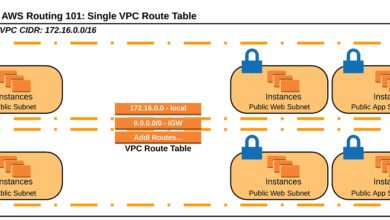AWS RDS: 7 Powerful Benefits You Can’t Ignore
Looking for a smarter way to manage databases in the cloud? AWS RDS is your ultimate solution—scalable, secure, and fully managed. Let’s dive into everything you need to know about Amazon’s go-to database service.
What Is AWS RDS and Why It Matters

Amazon Web Services (AWS) Relational Database Service (RDS) is a managed database platform that simplifies the setup, operation, and scaling of relational databases in the cloud. Instead of worrying about hardware provisioning, software patching, or backups, AWS RDS handles the heavy lifting so developers and IT teams can focus on building applications.
Core Definition and Purpose
AWS RDS is not a database itself but a service that supports multiple database engines, including MySQL, PostgreSQL, Oracle, SQL Server, MariaDB, and Amazon Aurora. It automates time-consuming administrative tasks such as provisioning, patching, failure detection, recovery, and backups.
- Supports six major database engines
- Enables high availability with Multi-AZ deployments
- Integrates seamlessly with other AWS services like EC2, S3, and CloudWatch
“AWS RDS removes the complexity of database management, allowing organizations to innovate faster.” — AWS Official Documentation
How AWS RDS Fits Into the Cloud Ecosystem
In today’s cloud-first world, businesses demand agility and scalability. AWS RDS fits perfectly into this ecosystem by offering a reliable, on-demand database infrastructure. Whether you’re running a small web app or a large enterprise system, RDS scales with your needs.
It integrates with AWS Identity and Access Management (IAM) for security, Amazon VPC for network isolation, and AWS CloudTrail for auditing. This deep integration makes RDS a cornerstone of modern cloud architectures.
Key Features That Make AWS RDS Stand Out
AWS RDS isn’t just another database hosting service—it’s packed with intelligent features designed for performance, resilience, and ease of use. These features are what set it apart from self-managed databases or competing platforms.
Automated Backups and Point-in-Time Recovery
One of the most critical features of AWS RDS is its automated backup system. You can enable daily snapshots and retain them for up to 35 days. More importantly, RDS supports point-in-time recovery, allowing you to restore your database to any second within the retention window.
- Backups occur during a user-defined maintenance window
- Storage for backups is included in your RDS instance cost (up to 100% of allocated storage)
- Point-in-time recovery minimizes data loss during accidental deletions or corruption
This feature is especially valuable for compliance-heavy industries like finance and healthcare, where data integrity is non-negotiable.
Multi-AZ Deployments for High Availability
For mission-critical applications, downtime is not an option. AWS RDS offers Multi-AZ (Availability Zone) deployments, which automatically provision a standby replica in a different AZ. If the primary instance fails, RDS performs an automatic failover to the standby, typically within 60–120 seconds.
- Failover is transparent to most applications
- Synchronous replication ensures data consistency
- Ideal for production environments requiring 99.95%+ uptime
While Multi-AZ increases cost slightly, the trade-off in reliability is well worth it for enterprise workloads.
Read Replicas for Scalable Performance
When your application experiences high read traffic—such as analytics dashboards or content-heavy websites—you can offload queries from the primary database using Read Replicas. AWS RDS supports up to five read replicas per instance, which can be distributed across multiple regions.
- Replicas use asynchronous replication
- Can be promoted to standalone instances if needed
- Supports cross-region replication for global applications
This feature enables horizontal scaling of read operations without modifying your application logic significantly.
Supported Database Engines in AWS RDS
A major strength of AWS RDS is its support for multiple relational database engines. This flexibility allows organizations to choose the best engine for their specific use case without sacrificing manageability.
Amazon Aurora: The Flagship Engine
Amazon Aurora is AWS’s proprietary database engine, compatible with MySQL and PostgreSQL. It delivers up to five times the performance of standard MySQL and three times that of PostgreSQL, all while being highly available and durable.
- Automatically scales storage up to 128 TB
- Self-healing storage with six-way replication across three AZs
- Pricing is competitive despite superior performance
Aurora is ideal for high-performance applications and is often the top choice for new projects on AWS RDS. Learn more at AWS Aurora Overview.
MySQL and PostgreSQL: Open Source Powerhouses
MySQL and PostgreSQL are two of the most popular open-source databases, and AWS RDS provides full support for both. They are excellent choices for web applications, SaaS platforms, and startups due to their robust feature sets and large community support.
- MySQL: Known for speed and ease of use; widely used in LAMP stacks
- PostgreSQL: Offers advanced features like JSON support, geospatial queries, and extensibility
- Both support automated patching and encryption at rest
These engines are perfect for developers who want open-source flexibility with enterprise-grade management.
Oracle and SQL Server: Enterprise-Grade Options
For enterprises already invested in Oracle or Microsoft ecosystems, AWS RDS provides managed versions of Oracle Database and SQL Server. This allows legacy applications to migrate to the cloud without re-architecting the entire data layer.
- Oracle support includes Enterprise Edition with advanced features
- SQL Server supports Standard, Web, and Enterprise editions
- Licensing can be brought-your-own-license (BYOL) or license-included
While these engines are more expensive than open-source alternatives, they offer seamless migration paths for large organizations.
Setting Up Your First AWS RDS Instance
Getting started with AWS RDS is straightforward, even for beginners. Whether you’re using the AWS Management Console, CLI, or Infrastructure as Code (IaC) tools like Terraform, the process is intuitive and well-documented.
Step-by-Step Guide via AWS Console
To launch your first RDS instance:
- Log in to the AWS Management Console and navigate to the RDS dashboard
- Click “Create database” and choose a template (e.g., Dev/Test, Production)
- Select your preferred engine (e.g., MySQL, PostgreSQL, Aurora)
- Configure instance specifications (instance class, storage, availability options)
- Set up credentials (master username and password)
- Configure connectivity (VPC, subnet group, security groups)
- Enable backups, monitoring, and maintenance settings
- Review and create the instance
The instance will be ready in 10–15 minutes. You’ll receive an endpoint URL to connect your applications.
Using CLI and Automation Tools
For repeatable and scalable deployments, use the AWS CLI or IaC tools. Here’s an example using the AWS CLI to create a MySQL instance:
aws rds create-db-instance
--db-instance-identifier mydbinstance
--db-instance-class db.t3.micro
--engine mysql
--master-username admin
--master-user-password mysecurepassword
--allocated-storage 20
This approach is ideal for DevOps teams practicing CI/CD and infrastructure automation.
Best Practices for Initial Configuration
When setting up your RDS instance, follow these best practices:
- Always enable encryption at rest using AWS KMS
- Use parameter groups and option groups to standardize configurations
- Place instances in a private subnet within a VPC for security
- Restrict inbound traffic via security groups (e.g., only allow port 3306 from application servers)
- Enable Enhanced Monitoring for deeper OS-level insights
These steps ensure your database is secure, performant, and compliant from day one.
Performance Optimization for AWS RDS
Even the most powerful database can underperform without proper tuning. AWS RDS provides several tools and strategies to optimize performance and reduce latency.
Choosing the Right Instance Type
AWS offers a wide range of instance types optimized for different workloads:
- db.t3.micro: Entry-level, burstable performance (ideal for development)
- db.r6g.large: Memory-optimized, powered by AWS Graviton2 (great for OLTP)
- db.m6g.xlarge: Balanced compute and memory (general-purpose)
- db.x2gd.16xlarge: High memory for large-scale data processing
Selecting the right instance type based on CPU, RAM, and I/O needs is crucial for optimal performance.
Storage Options and IOPS Tuning
AWS RDS supports three storage types:
- General Purpose SSD (gp2/gp3): Cost-effective, suitable for most workloads
- Provisioned IOPS (io1/io2): Designed for I/O-intensive applications like ERP or data warehouses
- Magnetic (standard): Legacy option, not recommended for new deployments
With gp3, you can independently scale IOPS and throughput, giving you more control over performance and cost. For high-demand applications, provisioning 10,000+ IOPS ensures low-latency responses.
Monitoring and Metrics with CloudWatch
AWS CloudWatch integrates natively with RDS to provide real-time metrics such as CPU utilization, disk I/O, connections, and latency. You can set alarms to notify you when thresholds are breached.
- Monitor
CPUUtilizationto detect performance bottlenecks - Track
FreeStorageSpaceto avoid out-of-disk errors - Analyze
ReadLatencyandWriteLatencyfor query optimization
Additionally, RDS Performance Insights provides a dashboard to visualize database load and identify top SQL queries consuming resources.
Security and Compliance in AWS RDS
Security is a top priority when managing databases in the cloud. AWS RDS provides multiple layers of protection to safeguard your data from unauthorized access and breaches.
Encryption at Rest and in Transit
All RDS databases can be encrypted at rest using AWS Key Management Service (KMS). This includes the database instance, automated backups, snapshots, and read replicas.
- Encryption uses AES-256 encryption standards
- Keys are managed through AWS KMS with audit trails via CloudTrail
- Data in transit is protected using SSL/TLS
Enabling encryption ensures compliance with regulations like GDPR, HIPAA, and PCI-DSS.
Network Isolation with VPC and Security Groups
RDS instances should always be deployed within an Amazon Virtual Private Cloud (VPC). This allows you to control network access using security groups and network ACLs.
- Only allow inbound traffic from trusted sources (e.g., application servers)
- Use private subnets to prevent public internet access
- Implement VPC endpoints to securely access RDS without traversing the public internet
These measures minimize the attack surface and protect against external threats.
IAM Integration and Access Control
AWS Identity and Access Management (IAM) enables fine-grained access control to RDS resources. You can define policies that restrict who can create, modify, or delete RDS instances.
- Use IAM roles instead of hardcoding credentials
- Enable IAM database authentication for PostgreSQL and MySQL
- Rotate credentials regularly and audit access via CloudTrail
This integration strengthens security and supports least-privilege principles.
Cost Management and Pricing Models for AWS RDS
Understanding AWS RDS pricing is essential to avoid unexpected bills. The service offers flexible pricing models based on instance type, storage, region, and usage patterns.
On-Demand vs. Reserved Instances
AWS RDS supports two main pricing models:
- On-Demand: Pay per hour with no long-term commitment (ideal for variable workloads)
- Reserved Instances: Commit to 1- or 3-year terms for up to 75% savings (best for stable, predictable workloads)
Reserved Instances are highly recommended for production databases that run continuously.
Understanding Storage and I/O Costs
Storage costs vary by type:
- gp2: $0.115 per GB/month (US East)
- gp3: $0.08 per GB/month + optional IOPS/throughput charges
- io1: $0.125 per GB/month + $0.065 per provisioned IOPS/month
Backup storage is free up to 100% of your primary instance storage. Beyond that, standard rates apply. Always monitor snapshot growth to control costs.
Cost Optimization Strategies
To reduce RDS expenses:
- Right-size instances based on actual usage (use CloudWatch metrics)
- Delete unused snapshots and automated backups
- Use Aurora Serverless for unpredictable workloads
- Leverage Reserved Instances for long-running databases
- Switch to Graviton-based instances (e.g., db.r6g) for up to 35% better price-performance
Regular cost reviews can lead to significant savings over time.
Migrating to AWS RDS: Strategies and Tools
Migrating existing databases to AWS RDS can be seamless with the right tools and planning. Whether you’re moving from on-premises or another cloud provider, AWS offers robust migration support.
Using AWS Database Migration Service (DMS)
AWS DMS allows you to migrate databases with minimal downtime. It supports homogeneous (e.g., Oracle to Oracle) and heterogeneous (e.g., MySQL to PostgreSQL) migrations.
- Replicates data continuously during migration
- Supports over 20 source and target engines
- Can perform one-time migrations or ongoing replication
Learn more at AWS DMS Documentation.
Snapshot-Based Migration
If your source database supports export to a snapshot format (e.g., MySQL dump), you can import it into RDS. Steps include:
- Export data from the source database
- Upload to Amazon S3
- Restore from S3 into a new RDS instance
This method is suitable for smaller databases or when downtime is acceptable.
Best Practices for Zero-Downtime Migration
To achieve zero-downtime migration:
- Use AWS DMS with change data capture (CDC)
- Test the migration process in a staging environment
- Synchronize data until cutover
- Update DNS or application configuration to point to the new RDS endpoint
- Monitor performance post-migration
Proper planning ensures a smooth transition with no impact on users.
Common Use Cases for AWS RDS
AWS RDS is versatile and used across industries and application types. Understanding real-world use cases helps illustrate its value.
Web and Mobile Applications
Most modern web and mobile apps rely on relational databases for user data, transactions, and content. AWS RDS provides the scalability and reliability needed to handle traffic spikes during product launches or marketing campaigns.
- SaaS platforms use PostgreSQL for multi-tenancy support
- E-commerce sites use MySQL for product catalogs and orders
- Mobile backends leverage Aurora for low-latency responses
Data Warehousing and Analytics
While RDS isn’t a data warehouse itself, it can serve as a source for analytics pipelines. Read replicas can offload reporting queries from the primary database, preventing performance degradation.
- ETL processes extract data from RDS to Amazon Redshift or S3
- Business intelligence tools like Tableau connect directly to RDS
- Real-time dashboards use Aurora for fast query performance
Enterprise Legacy System Modernization
Many enterprises are moving legacy Oracle or SQL Server databases to AWS RDS to reduce costs and improve agility. RDS provides a managed environment that reduces DBA overhead while maintaining compatibility.
- Migrate ERP, CRM, or HR systems to the cloud
- Consolidate multiple databases into a centralized RDS environment
- Enable disaster recovery with cross-region replicas
What is AWS RDS?
AWS RDS (Relational Database Service) is a managed database service that makes it easy to set up, operate, and scale relational databases in the cloud. It supports engines like MySQL, PostgreSQL, Oracle, SQL Server, and Amazon Aurora.
Is AWS RDS free to use?
AWS RDS is not free, but it offers a Free Tier for new AWS accounts. This includes 750 hours per month of a db.t3.micro instance for MySQL, PostgreSQL, Oracle, or SQL Server, plus 20 GB of storage and 20 GB of backup storage, for 12 months.
How does AWS RDS ensure high availability?
AWS RDS ensures high availability through Multi-AZ deployments, where a standby replica is maintained in a different Availability Zone. In case of failure, RDS automatically fails over to the standby instance with minimal downtime.
Can I scale my AWS RDS instance?
Yes, you can scale your RDS instance vertically (upgrading instance class) or horizontally (adding read replicas). Storage can also be scaled independently, especially with gp3 volumes.
What is the difference between Amazon RDS and Aurora?
Amazon RDS is a managed service for multiple database engines, while Aurora is a high-performance, MySQL- and PostgreSQL-compatible database engine built by AWS. Aurora offers better performance, scalability, and availability than standard RDS engines.
In conclusion, AWS RDS is a powerful, flexible, and secure solution for managing relational databases in the cloud. From automated backups and high availability to support for multiple engines and seamless scalability, it empowers businesses to focus on innovation rather than infrastructure. Whether you’re a startup or a large enterprise, AWS RDS provides the tools you need to build reliable, high-performance applications. By leveraging its features wisely—from cost optimization to security best practices—you can maximize both performance and value. The future of database management is in the cloud, and AWS RDS is leading the way.
Recommended for you 👇
Further Reading:









